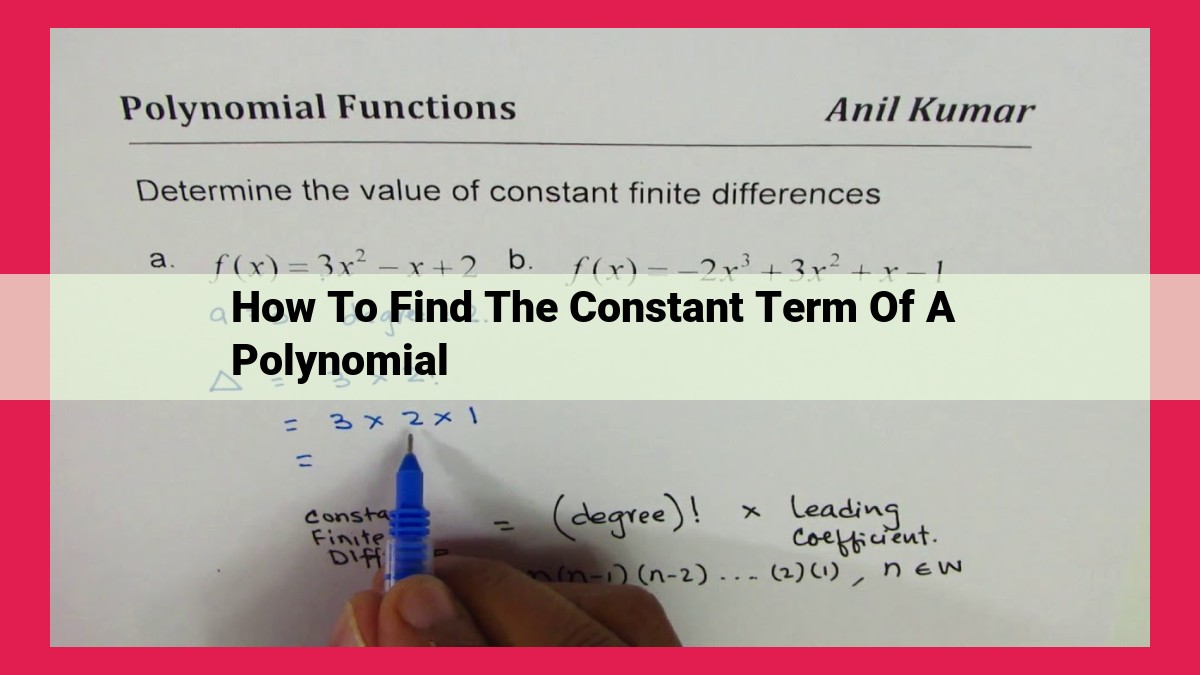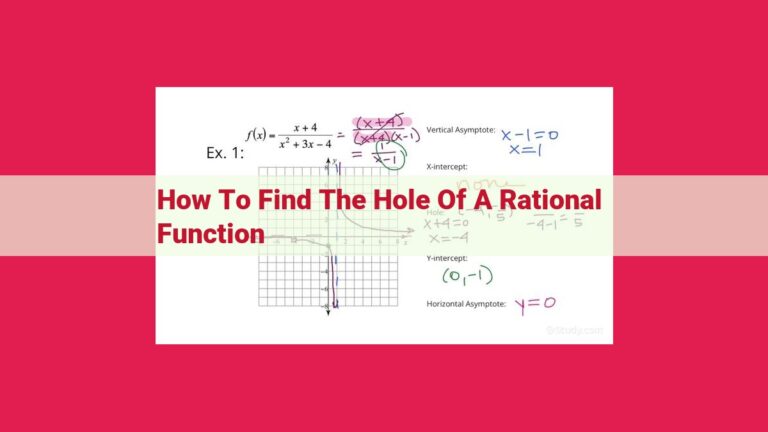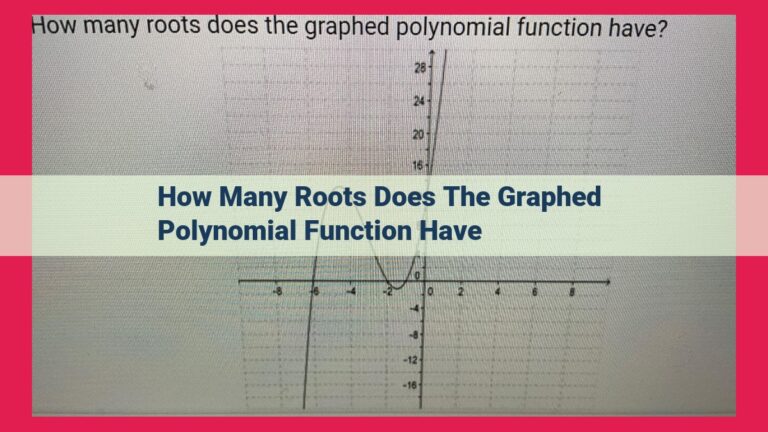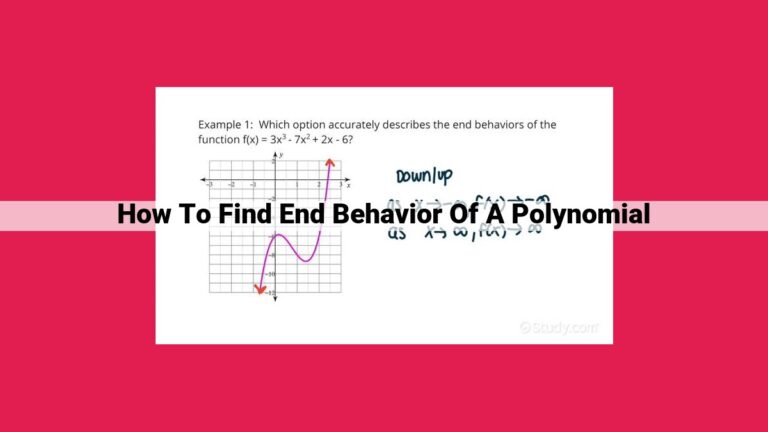Unveiling The Key To Polynomial Mastery: Identifying The Constant Term

To find the constant term of a polynomial, locate the term without any variables. This is the constant term, which is a numerical value that remains constant regardless of the variable’s value. Identifying the constant term is crucial as it determines the value of the polynomial when the variable is set to 0. Understanding the constant term, along with related concepts like coefficients, variables, and the degree of a polynomial, is essential for effectively working with and manipulating polynomials in various mathematical applications.
Unraveling the Enigmatic World of Polynomials: The Significance of the Constant Term
In the realm of mathematics, polynomials stand as enigmatic expressions, captivating the minds of scholars for centuries. To delve into their depths, we must first embark on a journey to understand their essence.
Polynomials: Building Blocks of Algebraic Expressions
Polynomials, in their simplest form, are algebraic expressions comprised of terms. These terms consist of a coefficient (a numerical value) multiplied by a variable (a placeholder for an unknown value) raised to a non-negative integer power (the exponent). Polynomials are commonly written in the form:
a_n * x^n + a_(n-1) * x^(n-1) + ... + a_1 * x + a_0
where a_n represents the leading coefficient (the coefficient of the term with the highest exponent) and a_0 represents the constant term (the term without a variable).
The Constant Term: A Pivotal Role
The constant term holds a position of paramount importance within a polynomial. It represents the value of the polynomial when the variable equals zero. This seemingly simple concept has far-reaching implications in polynomial manipulation and applications.
For instance, in the polynomial 3x^2 – 5x + 2, the constant term is 2, indicating that when x is zero, the polynomial’s value is 2. This understanding is crucial for graphing and solving polynomial equations, as it determines the polynomial’s y-intercept.
Related Concepts: Coefficients and Variables
Coefficients play a vital role in shaping the behavior of a polynomial. They determine the steepness and curvature of its graph, influencing its overall shape. By manipulating the coefficients, we can modify the polynomial’s properties to suit specific applications.
Variables, on the other hand, represent the unknown quantities in a polynomial. They allow us to express algebraic relationships and solve problems involving unknown values. The interplay between coefficients and variables gives polynomials their versatility and power.
The Constant Term: A Cornerstone of Polynomial Understanding
In the realm of polynomials, the constant term emerges as a pivotal component, a lighthouse guiding our navigation through these mathematical expressions. As we delve into the world of polynomials, let’s shed light on the definition, significance, and role of the constant term, a cornerstone in the study and application of polynomials.
Defining the Constant Term: A Constant Companion
The constant term in a polynomial is a term that lacks a variable, standing alone as a numerical value. It’s a constant companion, present regardless of the values assigned to the variables that may accompany it. For instance, in the polynomial 3x^2 + 2x – 5, the constant term is -5.
The Significance of the Constant Term: A Silent Yet Powerful Player
Identifying the constant term is crucial for several reasons. It serves as a reference point, as it represents the polynomial’s value when all variables are set to zero. This property makes the constant term a key factor in evaluating polynomials and understanding their behavior.
Moreover, the constant term determines a polynomial’s behavior at infinity. As the variable(s) approach infinity, the polynomial’s behavior is primarily influenced by the constant term.
The constant term in a polynomial, though often overlooked, is a silent yet powerful player. Understanding its significance is essential for effective manipulation and analysis of polynomials. By grasping the concept of the constant term, we gain a deeper appreciation for the intricacies of these mathematical constructs.
Related Concepts: Coefficients and Variables
- Introduce coefficients as numerical factors that multiply variables.
- Explain the role of variables as placeholders for unknown values.
Related Concepts: Coefficients and Variables
In the realm of polynomials, coefficients play the role of numerical companions, multiplying the variables, which act as placeholders for unknown values. Together, they form the building blocks of polynomial expressions.
Coefficients: The Guiding Force
Coefficients are the numbers that we see multiplying variables. They determine the magnitude and direction of each term in a polynomial. For instance, in the polynomial 2x + 5, the coefficient of x is 2, indicating that x is multiplied by 2. Coefficients can be positive, negative, or even zero, influencing the overall behavior of the polynomial.
Variables: The Placeholders for the Unknown
Variables, denoted by letters such as x, y, and z, represent unknown values. They act as placeholders, allowing us to express mathematical relationships without committing to specific numbers. For example, in the polynomial 3x – 2y, x and y are variables that can take on any numerical value. By manipulating variables, we can explore the behavior of the polynomial under different conditions.
The Symbiotic Relationship
Coefficients and variables work hand in hand to form a polynomial expression. Coefficients provide the numerical scaffolding, while variables represent the flexible framework. By adjusting coefficients and variables, we can tailor polynomials to model various mathematical phenomena. Understanding these concepts is crucial for effectively manipulating and solving polynomial equations.
The Degree of a Polynomial: Unveiling the Hierarchy of Polynomials
In the realm of mathematics, polynomials reign supreme as expressions composed of variables, constants, and exponents. Among their defining characteristics, the degree stands out as a crucial attribute that sheds light on their complexity and behavior.
The degree of a polynomial, denoted by the letter “n,” is the highest exponent of any variable appearing in the expression. This numerical value provides valuable insights into the polynomial’s structure and properties.
Classifying Polynomials by Degree
Polynomials can be classified into different types based on their degree:
- Linear Polynomials: Degree of 1
- Quadratic Polynomials: Degree of 2
- Cubic Polynomials: Degree of 3
- Quartic Polynomials: Degree of 4
- And so on…
The degree of a polynomial determines the shape of its graph. For instance, linear polynomials produce straight lines, quadratic polynomials create parabolas, and cubic polynomials depict cubic curves.
Comparing Polynomials by Degree
The degree of a polynomial also allows us to compare polynomials in terms of their complexity. A polynomial with a higher degree will generally have a more complex graph and behavior.
Consider two polynomials, P(x) and Q(x). If P(x) has a degree of 4 and Q(x) has a degree of 2, we can conclude that P(x) is more complex than Q(x). This is because P(x) will have a higher-order graph with more turning points and variations.
Significance of Degree in Polynomial Operations
The degree of a polynomial plays a crucial role in various polynomial operations. For instance, when multiplying two polynomials, the degree of the resulting polynomial is the sum of the degrees of the original polynomials. Similarly, the degree of the derivative of a polynomial is one less than the degree of the original polynomial.
Understanding the degree of a polynomial is essential for effectively manipulating, analyzing, and solving polynomial equations and expressions. It serves as a guiding principle that helps mathematicians comprehend the behavior of these fundamental mathematical entities.
Terms and Exponents: Building Blocks of Polynomials
- Define terms as individual sections within a polynomial.
- Explain exponents as indicators of the power of variables in each term.
Terms and Exponents: The Building Blocks of Polynomials
Terms: The Individual Components
Think of a polynomial as a colorful mosaic, with each tile representing an individual term. These terms are like Lego blocks, each contributing a unique piece to the overall structure. A term consists of a coefficient, a variable, and an exponent.
The coefficient is like a multiplier, telling us how many times the variable appears. For example, in the term “3x”, the coefficient is 3. The variable, represented by symbols like x or y, represents an unknown value. And finally, the exponent is like a tiny mathematical flag waving from the variable. It indicates how many times the variable is multiplied by itself.
Exponents: The Power of Multiplication
Exponents are like secret codes that unlock the power of multiplication. When an exponent is a whole number, it tells us how many times to multiply the variable by itself. For instance, in the term “x³”, the exponent 3 indicates that we multiply x by itself three times: x * x * x.
However, exponents can also be fractions or even negative numbers. A fractional exponent tells us to raise the variable to a fractional power, like x^(1/2). A negative exponent, on the other hand, means we take the reciprocal of the variable raised to a positive power, such as x^(-2).
Understanding Terms and Exponents
Mastering terms and exponents is crucial for working with polynomials. They help us identify the degree of a polynomial (the highest exponent of any variable), simplify expressions, and perform operations like addition and multiplication.
Remember, polynomials are like mathematical puzzles, and terms and exponents are the pieces we need to solve them. By understanding these building blocks, we unlock the power to navigate the world of polynomials with ease.
Evaluating Polynomials: Unlocking the Secret of Finding the Result
In the fascinating world of polynomials, we often encounter expressions that represent a relationship between a variable and a set of constants. Evaluating a polynomial involves determining its numerical value for a specific value of the variable. This seemingly simple task holds immense significance in various fields, including mathematics, physics, and engineering.
To evaluate a polynomial, we embark on a journey of several steps:
1. Understand the Polynomial’s Anatomy:
Begin by dissecting the polynomial into its individual components. Identify the terms, which are the sections separated by addition or subtraction symbols. Each term comprises a coefficient, which is a numerical factor, multiplied by a variable raised to a specific exponent.
2. Prepare for the Substitution:
Once you have a clear grasp of the polynomial’s structure, it’s time to prepare for the substitution. Assign a specific value to the variable, the unknown quantity in the polynomial. This value can be any number, positive or negative.
3. Embark on the Evaluation Process:
With the variable’s value at hand, you can now begin the evaluation process. Start by multiplying each coefficient by the corresponding power of the variable. Remember, the exponent indicates how many times the variable is multiplied by itself.
4. Combine the Results:
After multiplying all the terms, it’s time to combine them according to the operations prescribed by the polynomial. Add the terms with positive coefficients and subtract those with negative coefficients.
Example:
Let’s evaluate the polynomial p(x) = 2x³ + 3x² – 5x + 1 for x = 2.
- Step 1: Identify the terms: 2x³, 3x², -5x, and 1.
- Step 2: Assign the value x = 2.
- Step 3: Multiply each term: 2(2)³ = 16, 3(2)² = 12, -5(2) = -10.
- Step 4: Combine the results: 16 + 12 – 10 + 1 = 19.
Therefore, the value of the polynomial p(x) = 2x³ + 3x² – 5x + 1 at x = 2 is 19.
Evaluating polynomials is a fundamental skill in mathematics, providing a gateway to understanding more complex concepts. By mastering this technique, you unlock the power to solve intricate problems and make sense of the world around you through the language of mathematics.
Polynomial Functions and Function Values
- Introduce polynomial functions as functions defined by polynomial expressions.
- Explain the concept of a function value as the output corresponding to a given input.
Polynomial Functions: Unlocking the Magic of Function Values
In the realm of polynomials, we encounter not only the enigmatic constant term but also a fascinating entity known as the polynomial function. A polynomial function, unlike its static counterpart, the polynomial expression, is a dynamic entity, capable of producing output values for a given input value.
Imagine a polynomial function as a magical machine. You feed it an input value (like a number), and it spits out an output value (another number). This output value is known as the function value. It’s as if the polynomial function is a mischievous genie, granting your every numerical wish.
Polynomial functions arise from the enchanting world of polynomials. They are defined by polynomial expressions, which are mathematical phrases involving variables, constants, and exponents. When we evaluate a polynomial expression by plugging in a particular input value, we are essentially summoning the genie and asking it to work its magic.
The function value, the genie’s response to our input, is obtained by performing a series of calculations based on the polynomial expression. It’s like the genie follows a secret recipe, using the input value as its main ingredient. The result? A brand-new number, the output value.
By understanding polynomial functions and function values, we unlock a powerful tool for exploring the world around us. These concepts are invaluable in fields like engineering, physics, and economics, where mathematical models often take the form of polynomial functions. So, next time you encounter a polynomial function, remember the magical genie within, ready to grant your numerical wishes.
Substituting Values into Polynomials: A Guiding Adventure
Embrace the fascinating world of polynomials, where we encounter enigmatic expressions that dance with numbers and variables. Today, we embark on a quest to uncover the secrets of substituting values into these polynomials, an essential technique for unraveling their hidden beauty.
What is Substitution?
Imagine yourself as a fearless explorer navigating the polynomial jungle. Substitution, our trusty machete, allows us to replace the enigmatic variable with a specific value. Just like when we plug a value into a calculator, we breathe life into the polynomial, transforming it from a passive observer into an active participant in our mathematical adventures.
Step-by-Step Substitution Saga
To conquer the art of substitution, follow this heroic journey:
-
Identify the polynomial: Seek out the polynomial, the mysterious expression that beckons you with its variables and constants.
-
Pinpoint the variable: Identify the elusive variable lurking within the polynomial. It’s the one that looks like a tiny “x” or perhaps an elegant “y”.
-
Choose your value: Brave adventurer, it’s time to choose a specific value to replace the variable. Let your imagination soar, but remember that your choice will illuminate a unique facet of the polynomial’s character.
-
Substitute boldly: With the courage of a lion, replace every instance of the variable with your chosen value. Watch as the polynomial transforms, revealing its hidden depths.
Appreciating the Power of Substitution
Through substitution, we unlock a treasure trove of possibilities:
-
Evaluate polynomials: Transform abstract expressions into concrete numbers, bringing polynomials to life.
-
Solve equations: Unravel the mysteries of equations by substituting values into both sides.
-
Analyze polynomial functions: Chart the course of polynomial functions by plugging in values and observing their behavior.
By mastering the art of substitution, you become a maestro of polynomials, capable of deciphering their secrets and unraveling their mathematical wonders.
Expressions and Replacement: Making Sense of Mathematical Phrases
When you encounter mathematical equations, you’ll often come across expressions. These are phrases that represent values, like “3x + 5” or “y^2 – 4”. To make sense of these expressions, you need to replace the variables with specific values.
Let’s take the expression “2x + 1”. If you want to know its value when x is equal to 3, you simply substitute 3 for x:
2(3) + 1 = 6 + 1 = 7
So, when x is 3, the expression “2x + 1” evaluates to 7.
Replacing variables is key to working with expressions. It allows you to determine their values for different scenarios. For example, if you have a formula for the area of a rectangle, you can substitute the dimensions of your rectangle to find its area.
It’s also important to remember that when replacing variables, you are not changing the expression itself. The expression “2x + 1” is still the same expression; it’s just that when x is set to a specific value, it takes on a different numerical value.
Expanding Polynomials: Combining Terms
- Define expanding a polynomial as multiplying out all terms.
- Explain how expanding polynomials simplifies them for further operations.
Expanding Polynomials: Simplifying for Further Operations
In the realm of polynomials, understanding the concept of expanding plays a crucial role in manipulating and solving mathematical problems. Expanding a polynomial involves multiplying out each term in the expression. This process not only aids in simplifying the polynomial but also prepares it for further operations.
Polynomials consist of terms and constants. Terms include both the coefficients (numerical factors) and the variables (placeholders for unknown values). Expanding a polynomial entails distributing each term to all other terms in the expression. As a result, the polynomial becomes a sum of simpler terms.
Consider the example of the polynomial 3x + 2y. To expand it, we multiply the first term, 3x, by each term in the second term, 2y. This gives us 6xy. Next, we multiply the second term, 2y, by each term in the first term, 3x. This results in 6xy. By combining these products, we arrive at the expanded polynomial: 6xy + 6xy.
Expanding polynomials is essential for a number of mathematical operations, including evaluating polynomials, simplifying expressions, and solving equations. By distributing the terms and combining like terms, we can simplify complex polynomials into more manageable forms. This, in turn, allows us to work with polynomials more efficiently and effectively.





